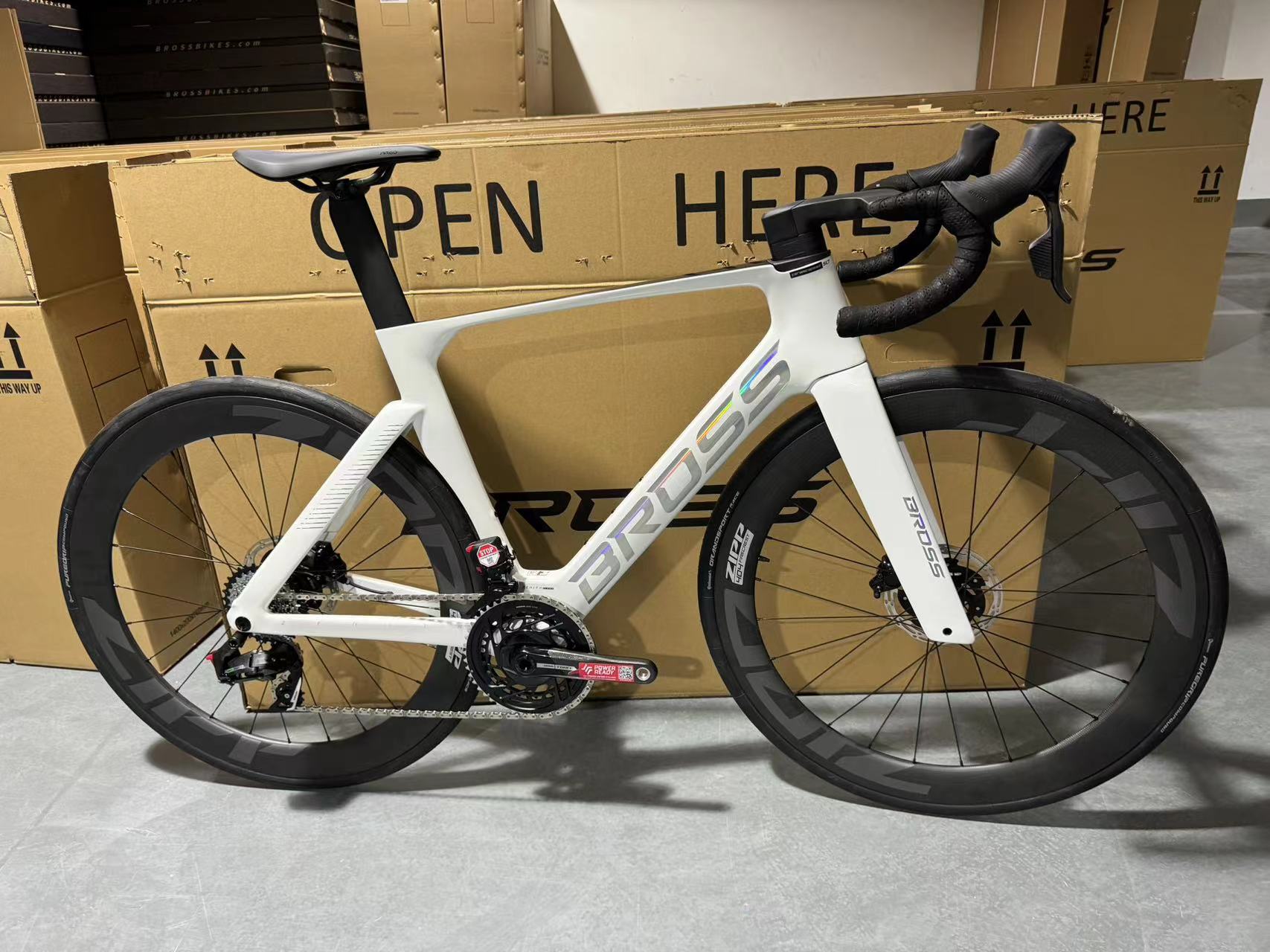In recent years, aero road bikes have gained increasing popularity among amateur enthusiasts chasing competitive performance, professional riders, and cyclists with an extreme demand for speed. Let’s gain a preliminary understanding of this road bike model that integrates aerodynamic design and lightweight performance:
I. Aerodynamic Optimization: The “Efficiency Engine” for High-Speed Cruising
Streamlined Frame Design: Frame tubes adopt Kammtail ( truncated airfoil ) or teardrop-shaped cross-sections to reduce eddy currents caused by airflow separation. For example, the “aero groove” design at the junction of the seat tube and rear fork can reduce turbulent interference from the rotating rear wheel.
Typical case: The front triangle of the Cervélo S5 reduces the windward area by 12% compared to traditional models, saving approximately 30% of power output at 40 km/h.
Integrated Components: The aero handlebar seamlessly connects with the frame’s head tube, reducing aerodynamic drag in the handlebar area (wind resistance from traditional drop bars accounts for over 25% of the whole bike).
Hidden brake systems (such as the flat-mount calipers on the Specialized Tarmac SL7) avoid exposing brake calipers to airflow, which could form drag points.
Wheel Set and Tire Width Adaptation: Deep-section carbon wheels (rim height ≥ 50mm) paired with 25-28c low-rolling-resistance tires utilize the “air curtain effect” to allow airflow to pass smoothly through the gap between the wheels and frame. Tests show that 50mm-deep wheels can ride 1.2 more kilometers per hour than 30mm-deep ones at 40 km/h.
II. Balance of Lightweight and Rigidity: Dual Breakthroughs in Climbing and Handling
Material and Structural Innovation: High-modulus carbon fiber (e.g., Toray T1100) is used to reduce frame weight while ensuring rigidity (mainstream aero frames weigh about 800-900g, only 100-150g heavier than traditional models).
The frame’s rear fork adopts a “slender profiled tube” design (such as the asymmetric rear fork of the Cannondale SystemSix), reducing deformation during pedaling and improving power transmission efficiency (rigidity loss ≤ 5%).
Geometry Tuning: A more aggressive riding posture (smaller head tube angle, lower Stack value) helps riders lean forward to reduce the windward projection area. For example, the Stack/Reach ratio of the Pinarello Dogma F is 10% lower than that of endurance models, making it more suitable for proactive aero riding styles.
III. Comprehensive Scenario Adaptability: All-Round Performance from Flat Roads to Rolling Terrain
Flat and High-Speed Stages: In group rides, the low wind resistance of aero bikes allows riders to save more energy when drafting; when breaking away alone, the aerodynamic advantage can extend the time maintaining speeds above 45 km/h by 20%. (Case: In Tour de France ITT (Individual Time Trial), over 90% of riders choose aero bikes, with an average speed 5-8 km/h higher than in the road race.)
Rolling Terrain and Short Steep Climbs: Although deep-section wheels are slightly less stable in crosswinds than shallow-section wheels, the rigidity advantage of aero frames helps riders reduce energy loss when accelerating up climbs. For example, the Scott Foil is 1.5-2 seconds faster than traditional models on a 300m short climb with a 10% gradient.
IV. Detail Design: The “Marginal Benefit” in Racing Scenarios
Cable Concealment and Integration: Internal cable routing (such as fully hidden electronic shifting cables) reduces turbulence from exposed cables while enhancing the bike’s sleek appearance (wind resistance reduced by about 5%).
Saddle and Seat Post System: A teardrop-shaped saddle paired with a setback seat post (Offset ≥ 20mm) moves the rider’s hips backward, further reducing the windward area and optimizing the pedaling angle.
Aero Accessory Compatibility: Some models support accessories like tail wings and water bottle fairings (e.g., the Cervélo S5’s “Speed Coat” water bottle system), which can reduce hydration resistance by 10% in long-distance events like triathlons.
Notes
Crosswind Stability: Deep-section wheels may experience “wheel flutter” in strong crosswinds (wind speed > 10m/s), requiring tires ≥ 25c to enhance grip.
Weight Compromise: Aero bikes are about 100-200g heavier than ultralight climbing frames, diminishing their advantage on continuous long climbs (e.g., over 10km).
Conclusion
Aero road bikes transform “speed” into quantifiable competitive advantages through the three-dimensional integration of aerodynamics, lightweight design, and rigidity, becoming an iconic model for efficiency in modern road cycling. Whether breaking personal PBs or seizing the lead in group sprints, their design logic always revolves around the core goal of “creating higher speed with less energy”.



